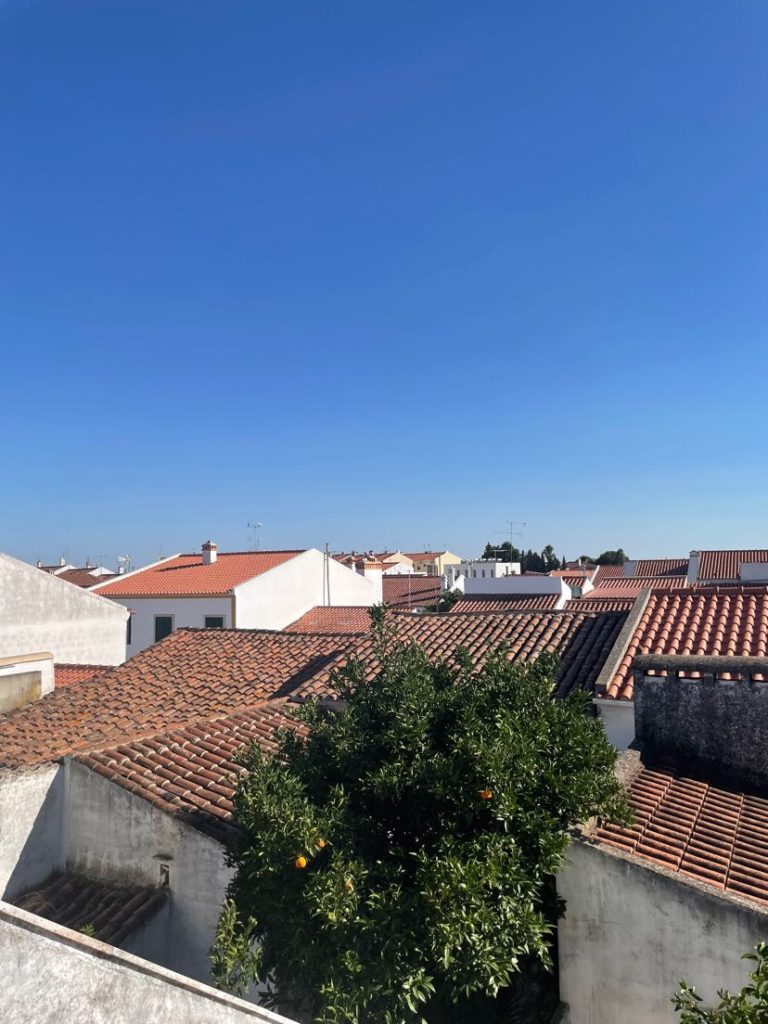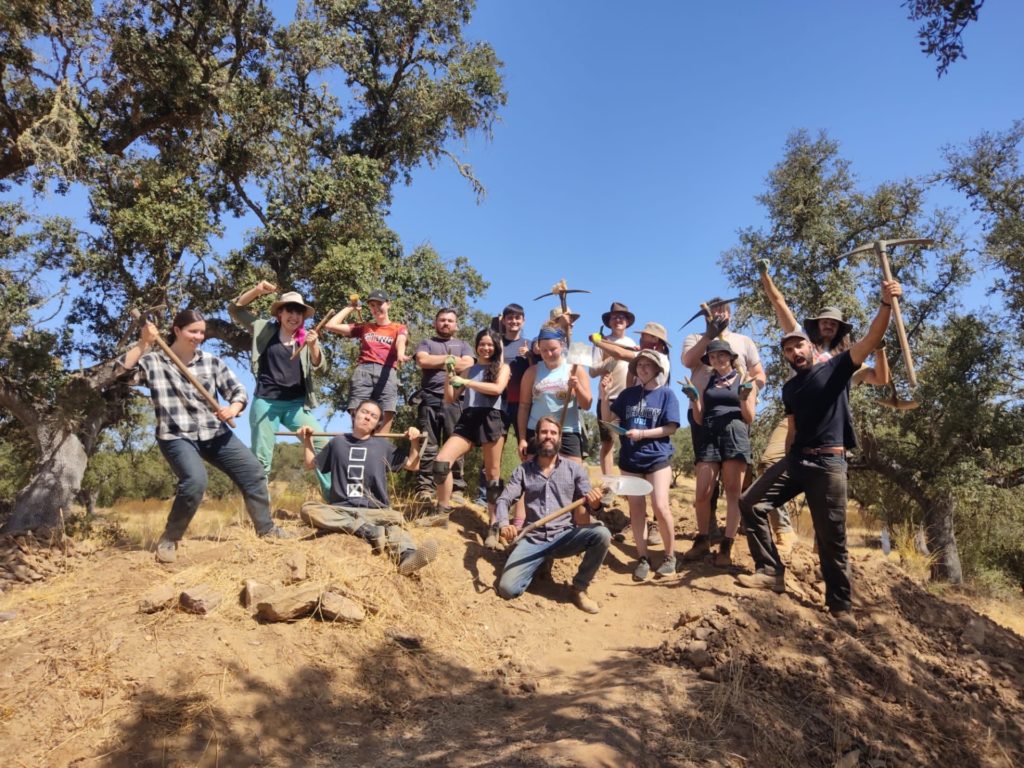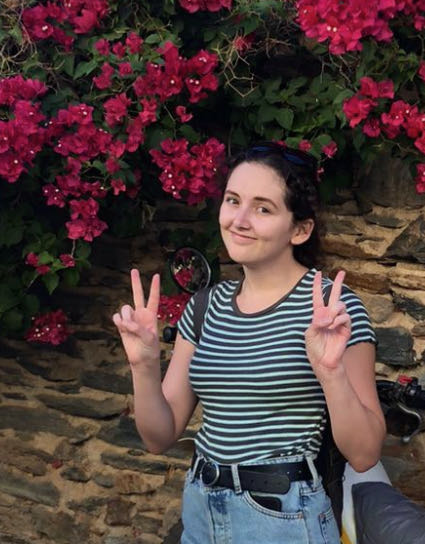A college classroom is one of the ideal environments for learning a language. But sometimes due to issues of accessibility or availability, it just isn’t possible. Casey Orr (2024)’s perseverance has allowed her to find language education in unlikely places, like on the hillside of a tiny town in Portugal.

Casey is an impressive and ambitious student, majoring in both Anthropology and Criminal Justice. She also has two minors: Law, Justice, and Public Policy; and Peace & Justice studies. She began learning other languages in eighth grade when she was signing up for high school classes. Dissatisfied with her options of Spanish or French, she researched other classes in the Michigan Virtual Catalog. That was where her interest in American Sign Language (ASL) sparked.
She studied ASL throughout high school, but unfortunately, the ASL program at Michigan State was discontinued by the time Casey arrived on campus. But that didn’t stop this dedicated student from trying harder. She discovered the option to take the courses in conjunction with Lansing Community College, earning credit towards her degrees at MSU. The courses were designed as a part of the Interpreter Training Program at LCC, so the classes were much more intensive than she was used to. As time went on, the other students received additional information in their other classes, while Casey only had the opportunity to take classes to fill her language requirement. This led to increased difficulty in the coursework, as well as missing out on opportunities for interpersonal communication, something she already had lacked as a result of the pandemic.
Even after concluding her ASL studies at LCC, Casey was determined to maintain language learning as a part of both her educational and professional careers. Upon learning of an archaeological program in Portugal, Casey took an interest in learning Portuguese. Brazilian Portuguese is a Less Commonly Taught Language, which Michigan State is fortunate and proud to offer courses in. However, resources for Portuguese as spoken in Portugal are even less frequently available, given that the Brazilian Lusophone population is much higher than Portugal’s. The two dialects are similar but have key differences in pronunciation. Free and/or accessible resources for Portuguese can be even more difficult to find.

Nevertheless, Casey persisted. With limited options but an eagerness to learn, Casey taught herself a bit of Portuguese online before flying to Lisbon to meet with her crew. The program was not MSU affiliated but was found by Casey on the Archaeological Institute of America website. The program was an archaeological field school, sort of like a study abroad for archaeology students. In order to offer support to sites that would otherwise be neglected or underfunded, the programs aim to connect amateurs to real-world experiences in the field of archaeology. Before departing for Redondo, she spent a night alone in Lisbon.
Even though her language skills were not well-developed yet, she enjoyed being in the city, a cacophony of world languages buzzing throughout the streets. She never once felt danger being a solo traveler, as Lisbon is one of the safest cities in the world for young tourists. Even though the language barriers were high, Casey could pick up on the generally friendly environment surrounding her. She said that mindfulness and respect were key for communication; she was sure to keep her body language open and polite to anyone she crossed paths with. “A smile will get you a long way!” she confirms.

In Redondo, she continued making an effort to learn the language. The hill was a late Roman Republican/Iron Age site that once consisted of an Iberian settlement, before they were likely attacked by the Romans. The architecture made up a series of rooms that were filled with pottery, bones, and lead-sling bullets that indicated the presence of Romans. Centuries of occupation on this site led to the creation of a man-made hill with layers and layers of material culture, but the site was vacant after 1st century BCE, around two thousand years ago. Casey was surprised to learn that this meant the artifacts they uncovered were more likely to be of higher value and quality preservation. When she first saw the site, she found the chances of her finding both artifacts and knowledge unlikely. But she was soon proven wrong.
Casey worked with archaeologists from across the globe, including Portugal. There, she was able to collect more tidbits of the language to be applied to her communication skills. Even though they still weren’t perfect, she was able to win the hearts of and befriend the locals well enough. The region was remote; the nearest city was an hour away by car, so the locals hardly spoke English, if any at all. But they used online translators to facilitate conversations, and soon Casey was surrounded by the support of her Portuguese community. Of all places, she found it there.

She may have even found a language learning opportunity in the most unlikely place of all: a sign on the bathroom door. While at a restaurant during an excursion to Castelo de Vide, a region on the border of Portugal and Spain, Casey noticed a peculiarity about the sign on the restroom door warning of a maintenance issue. The sign was written in Portuguese, Spanish, French, and finally English, at the very bottom. It was a fascinating difference from American culture, which typically only features English, sometimes an additional language such as Spanish, and maybe Braille. She was delighted by the inclusivity and thrilled to have learned something new.
In the future, Casey certainly wishes to maintain her language skills and continue with her studies. She knows that it will undoubtedly bolster her career, even if she has to search far and wide for the means to make it happen. But with her level of perseverance, there is nothing that can stand in her way.

By El Taverna
